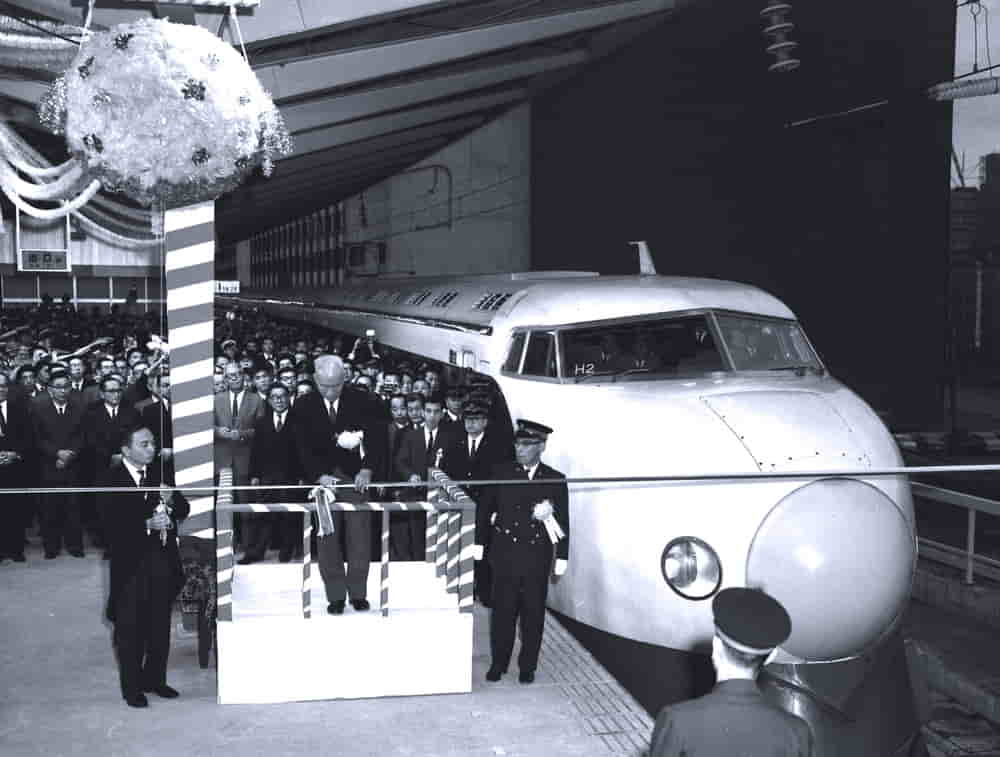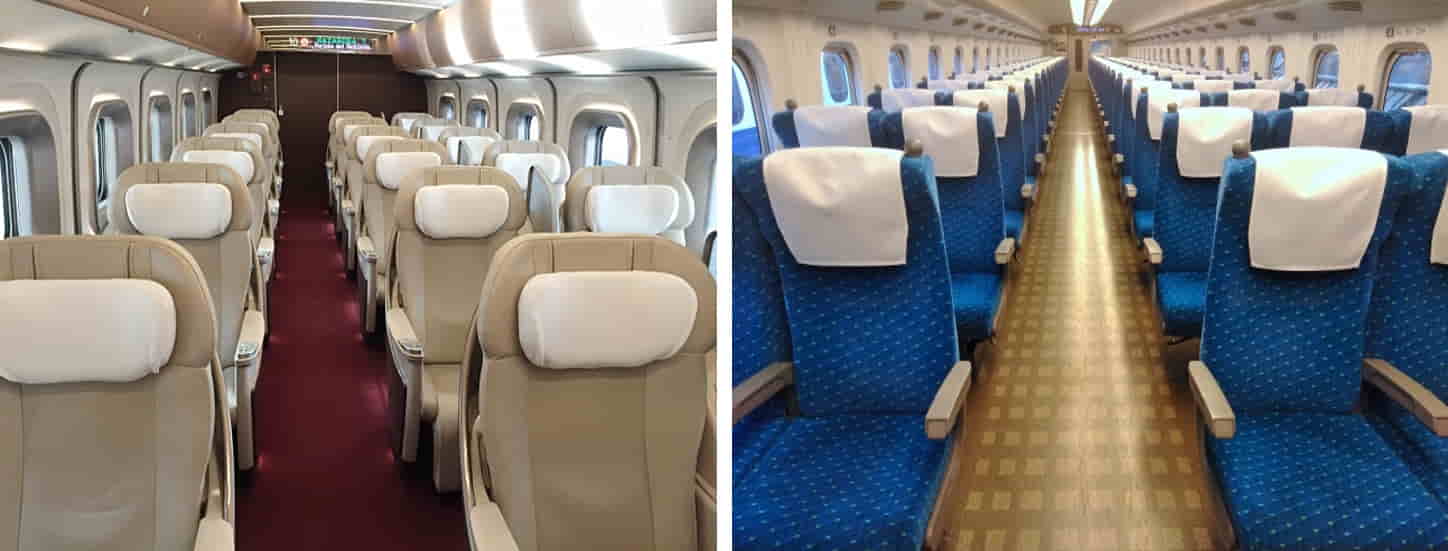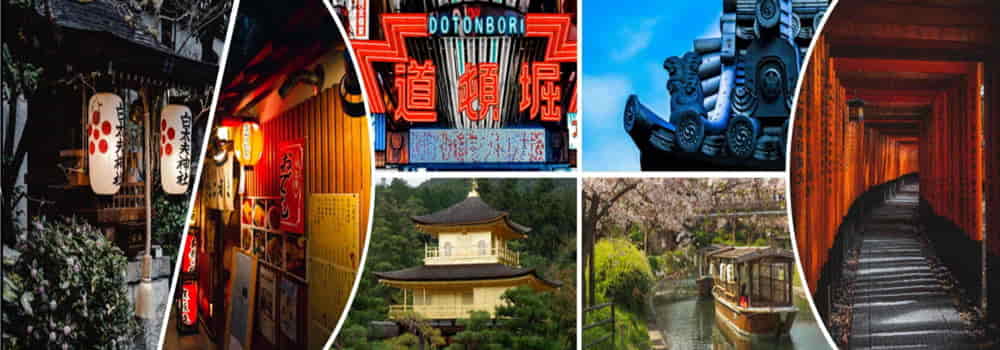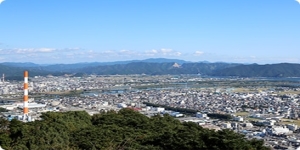Shinkansen 新幹線 the flagship of the Japanese Railways
 Shinkansen 新幹線 is the name given to trains of Japan's high-speed rail service, it is also known as "bullet train" due to its tapered shape. Since it was first introduced in Japan at the Tokyo Olympics, it has since carried millions of people across the country, Japanese and tourists alike. An incredible experience that allows you to cross Japan in all its entirety (or almost).
Shinkansen 新幹線 is the name given to trains of Japan's high-speed rail service, it is also known as "bullet train" due to its tapered shape. Since it was first introduced in Japan at the Tokyo Olympics, it has since carried millions of people across the country, Japanese and tourists alike. An incredible experience that allows you to cross Japan in all its entirety (or almost).
The history of the Shinkansen dates back to 1955, when the Japanese government decided to build a new high-speed rail line between Tokyo and Osaka in preparation for the 1964 Olympics. Initially, the construction encountered many difficulties, including financing problems, technical problems and civil engineering problems. However, thanks to the efforts and determination of the Japanese government and railway companies, the first Shinkansen was inaugurated on October 1, 1964, just before the start of the Olympics.
The first model created, known as the 0 Series, had a top speed of 210 kilometers per hour, an innovative aerodynamic shape and an air-cushion suspension system to ensure a smooth and comfortable ride. The success of the first Shinkansen was immediate and in a few years it became an icon of Japanese technological progress known throughout the world and in many cases copied both in form and in function.

In the 1970s and 1980s, the system was further developed, with the introduction of new lines and new series of trains that were ever faster and more comfortable. In 1982, the Shinkansen line was extended to Fukuoka on the island of Kyushu, bringing the high-speed rail system across the country. Over the years, the Shinkansen has become the primary means of transportation for the Japanese, not only to move quickly from one city to another, but also to travel comfortably and safely.
The innovation on the means and technology behind this train has never stopped, in recent years, the system has undergone further technological and design improvements. The new N700 series, introduced in 2007, has a top speed of 300 kilometers per hour, is equipped with an advanced braking system and cruise control system to ensure your journey is even safer and more comfortable. But Japan's high-speed system is delighting us with new technologies and cars that we will soon see whizzing through Japan.
Another thing that distinguishes the Shinkansen is its efficiency, punctuality and safety. The trains are capable of speeds of up to 320 kilometers per hour, making them a very affordable travel option for those who want to get from one city to another quickly, whether for tourism or especially for work. Plus, the trains come with a host of conveniences, including spacious seating, power outlets, free Wi-Fi access, and even meeting rooms.

Regarding its punctuality, as with all the Japanese network, it is known to always be on time, and the system has a punctuality rate of 99%. This is possible thanks to the advanced technology used in the trains, which makes them able to accelerate and decelerate rapidly without causing excessive vibration or noise. Also, the Shinkansen is known for its safety. The trains are equipped with a number of devices, including automatic brakes, speed sensors and fault monitoring systems. This ensures that they are always able to function safely and reliably, even in adverse weather conditions.
The Shinkansen is also an important example of Japanese industrial design. The sleek, streamlined shape of the trains was designed to reduce air friction and improve speed and efficiency. They are particular, many of you who have been in Japanese will have seen or even used them, some have funny shapes with a long tapered "snout". Additionally, the interior of the trains has been designed to maximize space and enhance passenger comfort. Some models are beautiful, take for example those traveling on the Kyushu line which have wooden interiors and very comfortable armchairs.
The efficiency and above all the widespread distribution of the shinkansen network also has a significant impact on the Japanese economy. Thanks to its speed and reliability, the Shinkansen rail system has helped to promote tourism in Japan and made the country more accessible to foreign visitors (who thanks to the Japan Rail Pass can use it without problems), and allow quick commute to work by cutting so cost and time. In addition, the Shinkansen rail system has also played an important role in reducing air pollution, as many Japanese people prefer to travel by train rather than by car.
Sources Images
jr-shinkansen
The Japan Times
acprail

 English (United Kingdom)
English (United Kingdom)  Italiano (it-IT)
Italiano (it-IT) 


![[Review] Princess Toyotomiプリンセス トヨトミ](https://www.fukainihon.org//cache/mod_jt_contentslider/fdfb524f85518b9476158c79c8ea022f_328.png)


